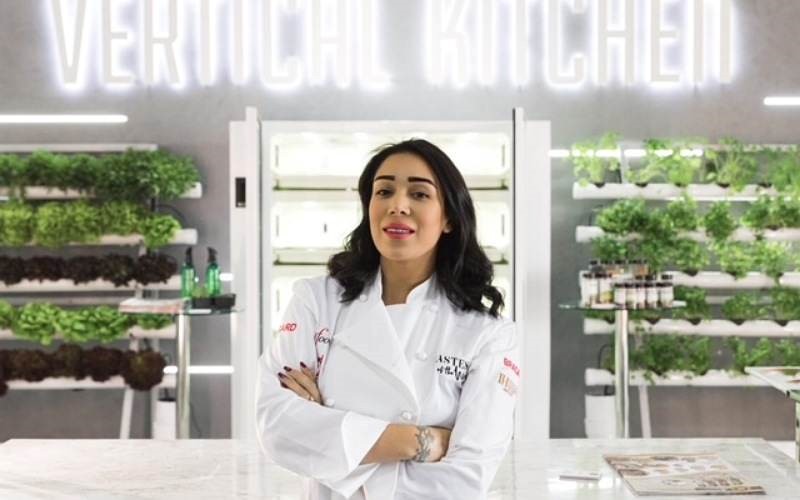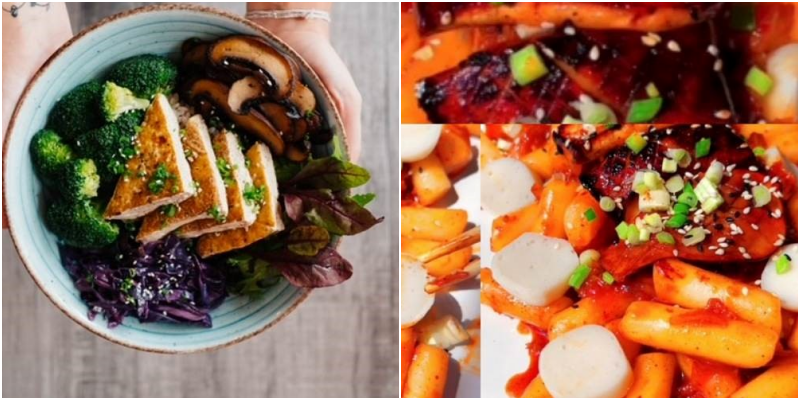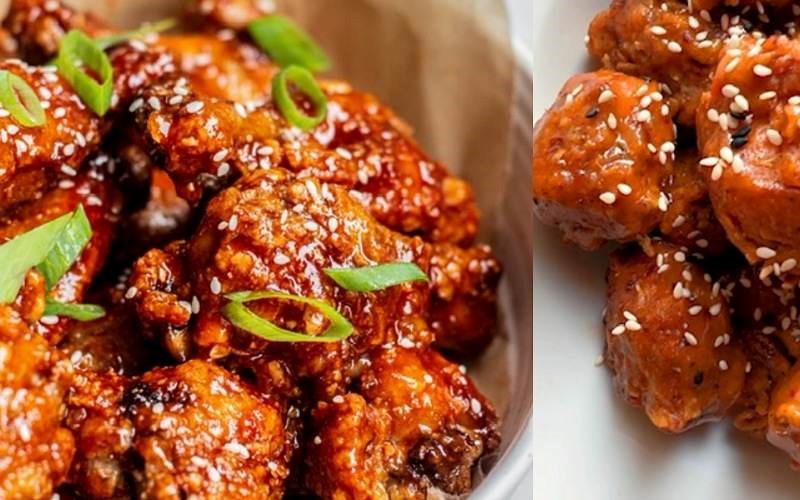- 한국어
- English
- 日本語
- 中文
- العربية
- Español
- Français
- Deutsch
- Pусский
- Tiếng Việt
- Indonesian
By Honorary Reporter Shaymaa Mohammed Roshdi from Egypt
Photos = Sky Sommers
Demand for vegan food is growing worldwide, a trend highly related to Korean cuisine. Buddhist traditions strongly influenced Hansik (Korean food) for a long time as the nation's temple food uses no animal products except dairy.
Vegan chef Sky Sommers, a Korean food lover based in Dubai, the United Arab Emirates, has made vegan versions of famous Korean dishes such as bulgogi (marinated grilled beef) and yangnyeom (sweet and spicy) chicken.
Because of my interest in her vegan concepts of Korean cuisine, I conducted an email interview with her from March 5-10.

Chef Sky Sommers has made vegan versions of famous Korean dishes.
Briefly introduce yourself.
I'm an Iraqi British vegan chef based in Dubai, the United Arab Emirates. In 2017, I launched a delivery service for vegan meal plans and two years later, my company opened one of the world's largest vegan restaurants, Veganity. My love for food and flavors is why I became a chef and my passion for veganism made me experiment and get more creative in my cooking.
Why did you choose Korean cuisine for vegan cooking?
I've always had an obsession with Asian cuisines. The history, culture, ingredients and aromatic bold flavors always leave me satisfied. Before I went vegan, my favorite dishes were Korean dishes, especially bibimbap (rice with spicy red pepper paste, meat and vegetables), bulgogi and Korean-style fried chicken. One thing the dishes have in common is that they partially contain meat and have strong flavors. So my mission was to recreate all the dishes I loved into plant-based versions.
Is it difficult to replace the ingredients of Korean food?
Not at all. We are living in an era of easy access to vegan versions of replicate flavors. Soy in general is very versatile and absorbent that can replicate chicken and beef easily if prepared properly. People easily think of vegan food as bland but I think that this has nothing to do with being vegan because any dish with no seasoning has no life.

The chef's Buddha bowl (left) is also called vegan bibimbap and she makes tteokbokki (spicy rice cake) in vegan form.
Describe the Korean dishes you've made vegan versions of.
I've done my best to replicate as many dishes as possible ranging from Korean fried chicken, and barbecue beef to vegan meat, chicken bibimbap bowls, kimchi fried rice, tteokbokki (spicy rice cake), bulgogi and unlimited styles of noodles. Many recipes can be made vegan while retaining their flavor and taste.
There will always be a marginal difference between the vegan and original versions but not to the extent of being too noticeable. For example, the original recipe for kimchi has anchovies in it. Replacing the anchovies with kelp and miso produces the exact umami taste expected from original kimchi. Anything that requires beef, chicken or fish stock will always have a generic version since they can be replicated using vegan stock powders.
Any closing comment about vegan cooking?
Going vegan isn't a new trend, it's been around for thousands of years especially in Asia. Plant-based food is the epitome of nutritional health. After going vegan, I learned to appreciate food a lot more.

This is the chef's version of vegan yangnyeom (sweet and spicy) chicken.
Chef Sommers also shared the receipt for vegan-style yangnyeom chicken.
Preparation
Use tofu instead of chicken. Drain the water from the tofu and put it in a fridge overnight to dry it more. Dice the tofu into pieces the size of chicken nuggets and soak with vegan chicken stock. Set aside while the rest of the ingredients are prepared.
Flour mixture
1 cup of flour
1 tablespoon of corn flour
1 teaspoon of baking powder
1 teaspoon of salt
1/2 teaspoon of black pepper
1 teaspoon of paprika
1 teaspoon of garlic powder
1 teaspoon of coriander powder
1 teaspoon of dried basil
1 teaspoon of dried thyme
1 teaspoon of dried oregano
Mix well.
Wet batter
1 cup of unsweetened soy milk
1 tablespoon of apple cider vinegar
Mix well and let it curdle for five minutes.
Sweet miso chili sauce
1 big tablespoon of sweet miso
2 teaspoons of sugar
1/4 cup of mirin
1 squeezed orange juice
1 teaspoon of garlic chili oil
Mix well.
Take the tofu piece and coat it with the dry mixture. Dunk it in the wet batter and again in the dry mixture. Fry the coated pieces in oil or air fryer on high heat until they are golden brown and crispy. After frying, coat them with the miso sauce. Garnish it with toasted sesame seeds and spring onions.
kalhong617@korea.kr
*This article is written by a Korea.net Honorary Reporter. Our group of Honorary Reporters are from all around the world, and they share with Korea.net their love and passion for all things Korean.